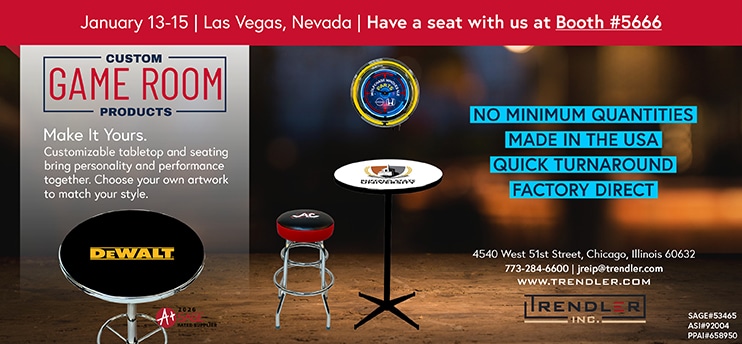Despite strong opposition from trade associations, including PPAI, the United States began charging port fees on China‐manufactured ships on Tuesday as a result of the Office of the United States Trade Representative’s Section 301 investigation on China shipbuilding.
On Friday, the USTR announced the following modifications and proposed modifications to its response plan:
- $46 per net ton fee on foreign-built vehicle carriers (effective October 14).
- 100% tariffs on ship-to-shore cranes and cargo handling equipment.
- Proposed tariffs up to 150% on rubber-tired gantry cranes and components.
- Fee carve-outs for certain LPG and ethane carriers under long-term charter.
As a result, promotional products companies, many of which rely on imports from Asia, may face higher container shipping costs (estimated $600–$800 more per container), port delays and reduced flexibility (especially at smaller U.S. ports) and increased product costs, as well as tighter margins for branded merchandise.
- China had already responded to the looming port fees by announcing that vessels owned or operated by American companies or individuals, and ships built in the U.S. or flying the American flag, would be subjected to a 400 yuan ($56) per net ton fee per voyage if they dock in China, according to The Associated Press.
“Most of PPAI’s nearly 15,000 members are small and mid-sized businesses, meaning they lack the purchasing power to absorb rising costs like large corporate brands can,” says Alok Bhat, market economist, research and public affairs lead at PPAI.

Alok Bhat
Market Economist, Research & Public Affairs Lead, PPAI
“Larger distributors and suppliers may secure better freight rates, leaving smaller competitors at a disadvantage. Independent distributors may lose contracts if corporate buyers see the costs of promotional products rise significantly.”
The deadline to submit written comments on the proposed further modifications is November 12. Comments can be submitted here.
PPAI’s Stance
During a hearing in March, concerns raised included increased costs, supply chain disruption, impact on agriculture and a lack of direct benefit to U.S. shipbuilding. Many pointed out that the U.S. shipbuilding sector lacks capacity to replace Chinese-built vessels anytime soon, making the policy more punitive than productive.
Instead of imposing broad fees, there were recommendations during the hearing for alternative approaches such as:
- Tax incentives and subsidies for U.S. shipbuilding to improve competitiveness.
- Targeted trade agreements to address concerns about China’s subsidies without harming U.S. businesses.
- Delays or phased implementation to allow industries time to adjust.
- Exploring exemptions for non-Chinese operators to avoid unintended consequences.
“PPAI strongly urges USTR to consider the unintended economic consequences of the proposed Section 301 remedies, particularly their strain on U.S. supply chains, cost structures and business operations,” Drew Holmgreen, president and CEO of PPAI, said in comments submitted to the USTR ahead of the hearing.
“While these measures are intended to support domestic shipbuilding, they risk creating higher costs for importers, disrupting logistics networks and weakening the competitiveness of industries that rely on global trade, including promotional products.”
View PPAI’s comments to the USTR below.
PPAI and nearly 30 other associations, including the American Apparel & Footwear Association, Consumer Technology Association and National Retail Federation, supported a study by Trade Partnership Worldwide that found USTR’s initially proposed remedies would increase shipping costs by 8% to 14%.


